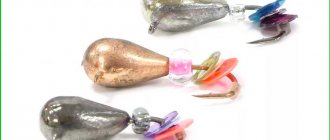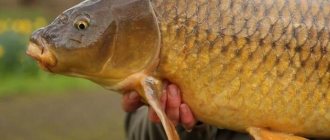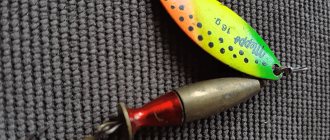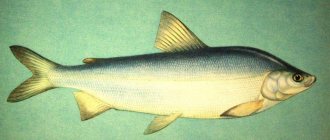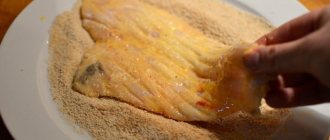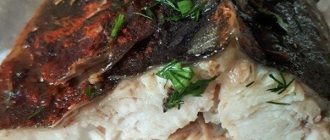Fishing is, one might even say, a creative activity that requires ingenuity, so you need to have ingenuity, often pay attention to various little things, and also quite often turn to such seemingly old-fashioned methods of fishing.
Fishermen of that time did not have modern gear and water transport
After all, they “work” as effectively as modern methods. Therefore, today you can fish with a button, fried sand or brick without much effort, just like a hundred years ago. But our grandfathers and great-grandfathers did not have modern, fast and maneuverable boats, which today’s fisherman can purchase by clicking on the link https://kateramotori.ru/catalog/lodki-pvkh/. And the catches of our ancestors were no worse, but many times larger and more substantial. Let's share the wisdom of new well-forgotten old methods of fishing.
Fishing with a brick
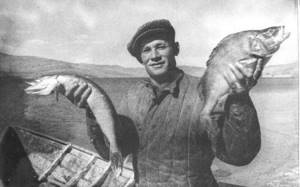
And everyone could boast of catches
In the old days, our ancestors often boiled bricks in a huge vat, though not ordinary bricks, but porous and red ones. Something similar to porridge from an axe, because in addition to the brick, various aromatic herbs were added to it, such as mint, dill, parsley, anise, hemp and the like. One has only to notice that as soon as the water in the vat boils away, it is immediately added again, and with it the next batch of herbs. In this way, the brick is boiled for a long, long time; it should be well saturated with the fragrant odors of these herbs. Then they take it out and pour it over with fragrant sunflower oil while the brick has not yet cooled down.
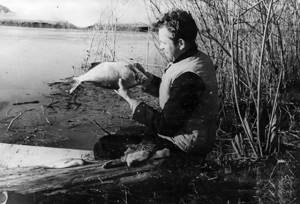
Old fishing methods still work
Of course, the oil should be natural, very aromatic, preferably homemade. As soon as you find yourself at the fishing spot, this brick should be thrown into the water, it will be used as bait for the fish, which will feel this seductive aroma and will immediately find themselves in the place you need, and the bait should be thrown not far from the brick. For a very long time it will attract fish with its unique smell to the fishing spot.
On a brick
Previously, porous red brick was boiled in a vat in the garden; various kinds of fragrant herbs (mint, dill, celery, oregano, parsley, anise, hemp, etc.) were thrown into it. As the water boils away, you need to throw in the grass again, add water and cook for quite a long time until the brick is completely saturated with the aromas of the grass. Then you need to take out the brick, and while it is hot, pour vegetable oil over it. The oil should be homemade, rustic, with the smell of seeds.
Upon arrival for fishing, this brick was thrown into the water instead of complementary food. Fish swim to the smells emitted by the brick, and you need to cast the bait closer to it. The brick works for quite a long time.
Buttoned
Fans of carp and carp often catch these fish with such an unusual object... a button, and it turns out very successfully. By the way, you can catch both bream and silver carp this way. They take the end of the fishing line, and fix their favorite treat on it, it can be a cake or a crust of bread, then a little higher on the other leash they attach a flat, small button.
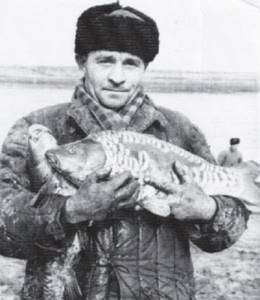
Carp and carp were successfully caught using a button
This method is designed for the fish to swallow a tempting delicacy and a button. Time will pass, and she, of course, will spit out this inedible object. And this happens in fish with the help of gills, which means that the button can firmly hold the fish, since it will pass through the tight opening of the gill cover. And the lucky one will only have to pull the prey closer to the shore.
On fried sand
Amazingly effective bait is obtained from fried sand. For this purpose, you need to heat the sand in a large frying pan, to which you add vegetable oil (again, natural, homemade), and you also need to add all kinds of natural flavors to the sand. It could be parsley, dill, anise, hemp, etc. and so on. Sand also works for quite a long time: 2 – 3 days.

We fished both in summer and winter, alone. And…
Vainly forgotten grandfather's bait
The baits that our ancestors prepared a hundred or more years ago are considered forgotten, but in vain, because they were catchy. For example, the tail of a small crustacean was excellently used for catching carp that live in reed thickets when summer is almost over.
Pieces of the freshest squid and equally fresh shrimp are such tasty baits for pike perch, especially during a complete lack of bite on hot days. Water from squid that has recently been defrosted, or raw chicken liver that has been ground into minced meat, is a good choice for soaking foam rubber when you go fishing for pike perch.
The offal of a caught pike, thrown into the water, guarantees that after about 40 minutes a predator will appear on the horizon, sensing this seductive aroma.

It’s a pity that photographs were rarely taken at that time, otherwise one would have seen much more impressive moments from fishing
Alternative view
Have you ever heard of button fishing? On fried sand? What about brick? Do you know what an underwater wreath is or what baits were used to catch fish 70 - 100 years ago? But our grandfathers were fishermen no worse than modern fishing enthusiasts, if not better.
—
On a brick
Previously, porous red brick was boiled in a vat in the garden; various kinds of fragrant herbs (mint, dill, celery, oregano, parsley, anise, hemp, etc.) were thrown into it. As the water boils away, you need to throw in the grass again, add water and cook for quite a long time until the brick
completely saturated with the aromas of grass. Then you need to take out the brick, and while it is hot, pour vegetable oil over it. The oil should be homemade, rustic, with the smell of seeds.
Upon arrival for fishing, this brick was thrown into the water instead of complementary food. Fish swim to the smells emitted by the brick, and you need to cast the bait closer to it. The brick works for quite a long time.
On fried sand
Amazingly effective bait is obtained from fried sand. For this purpose, you need to heat the sand in a large frying pan, to which you add vegetable oil (again, natural, homemade), and you also need to add all kinds of natural flavors to the sand. It could be parsley, dill, anise, hemp, etc. and so on. Sand also works for quite a long time: 2 – 3 days.
Buttoned
Most often carp and carp are caught using the button, but you can also catch silver carp and bream. A bait is tied to the end of the fishing line, the role of which can be a piece of cake or a crust of bread, and a little higher on the other leash a flat small button is mounted. This technique is based on the fact that the carp, having swallowed the delicacy, will swallow the button along with it. And... after some time, of course, he will spit it out, because... it's inedible. But the fact is that the fish spits out the button not through the mouth, but through the gills. Having passed through the tight slit of the gill cover, the button will securely hold the fish on a leash. The fisherman will only have to drag the carp to the shore and rejoice at his success.
Grandfathers' secret baits
Fishermen 100 years ago also had their own catchy baits, which few people remember today. For example, the tail of a small crustacean is a bait for catching carp in reed thickets at the end of summer.
Strips of fresh squid and fresh shrimp are a delicacy that no pike perch will refuse, even during a complete lack of bite in the summer heat.
Juice from defrosted squid, fresh raw chicken liver ground into minced meat - catchable impregnations for foam when fishing for pike perch.
Giblets from a caught pike and thrown into the water are a 100% guarantee that within 30 - 40 you will be able to catch a predator that has swum to this scent.
Underwater wreath
On lakes where the bottom is mostly pebbles or sand, in the absence of vegetation, in early spring you need to knit wreaths from pine branches. The diameter of each should be approximately 2 - 3 meters. The wreaths are tied with ropes, weights are attached and they are sunk at the fishing spot. With the onset of spawning, fish come here for this purpose. They spawn in this “garden” and then stay close to it throughout the summer. Here is their offspring, their home. This means that predatory fish will also hunt near the underwater wreaths.
Maybe you also have some secrets of fishing from your grandfathers? Feel free to share them in the comments, if you don’t mind, of course!
Underwater wreath
On water lakes where there is no vegetation and there are pebbles and sand at the bottom, with the onset of spring it is necessary to tie wreaths from pine branches with a diameter of 2-3 meters. To tie such wreaths together, ropes are used, weights are mounted on them and they are sunk in a pond. As soon as spawning begins, fish rush to this place for this purpose. In such an unusual “garden” they spawn, and then live near it almost all summer. They probably think that this is their homeland. There is a high probability that predatory fish will come to such underwater “gardens” to hunt. And a smart fisherman will wait for his fish here.
These are the simple and simple ways of catching peaceful and predatory fish, invented by our ancestors a hundred years ago. If you have something to share with us, feel free to write in the comments.
An ancient ancient method of obtaining bait for fishing
When we go fishing in the summer, we sometimes take a tent and a supply of provisions in order to have a good rest and fish for several days. Such long-term fishing is more reminiscent of a tourist holiday in nature than the goal itself, to catch fish. In such cases, fishermen take not only a supply of food, but also a good supply of fishing baits, purchased in advance at a fishing store.
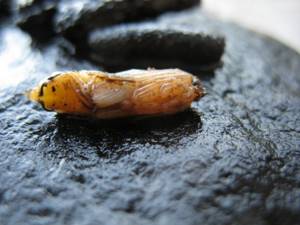
Sometimes, it happens when, in hot summer weather, it is not possible to maintain a supply of bait, and your vacation, with active fishing, is in full swing and you are wondering what to do. And now, the best option remains, to look for bait here, on the reservoir, remembering the ancient, ancient methods.
The first thing you can do is look for bait directly in the water. Walking along the shore, you can always find submerged tree branches lying not far from the shore.
First of all, you need to clear a small space on the shore and lay a piece of fabric or polyethylene there. Now you can pull the branch out of the water and shake off everything that is on it directly onto the litter.
Read: Bait of animal origin for fishing in spring
In such cases, the permanent inhabitants of this flooded branch will be amphipods, leeches, snails and various larvae, including caddisflies. Next, it’s worth collecting all this in a bucket with water taken from the reservoir. Such a bait will be good for catching any fish, because it is its natural food.
The second option is to get the bait and dig it up at the bottom of the reservoir. If you are on a flowing body of water, for example, on a river, then you should find a sandy bottom with a slight current. Having entered about half a meter deep, you need to use a shovel or bucket to take a decent portion of the sand that is at the bottom.
Then it must be pulled ashore and dumped on the ground. By raking this soil with your hands, you can find interesting bait in the form of bloodworms and tubifex worms. In such places there are more tubifex worms than bloodworms, but there is no need to be upset in advance, these small, inconspicuous worms are a very big delicacy for fish.
Having searched for the bait in the water, you can now look for it on the shore. Walking along the shore next to the water, you need to find non-alluvial soil consisting of earth, not sand. Having retreated about a meter from the water, in this wet soil you can dig up soil worms, sometimes reaching up to ten centimeters.
Read: Fishing with caddisfly
These worms, living near the river, are different from ordinary earthworms. They are brown in color, with a slight gray tint, and if you pull them, they are more fragile, they begin to divide immediately, unlike soil worms.
But the bite is much better on such river worms; all river fish are caught on them. So, using a bunch of worms dug up near the water is good for catching catfish, large chub and ide. Such worms must be stored in the same soil from which they were dug up, making sure to find a cool place in the shade.
If the soil where they are located begins to heat up, the worms will die. At first glance, there seems to be nothing difficult in finding a nozzle; many people just don’t know about it.
Subscribe to
our channel in Yandex Zen


